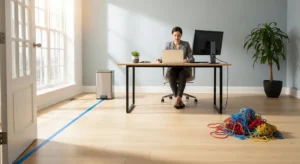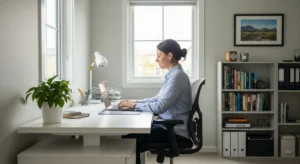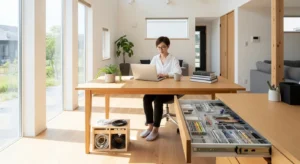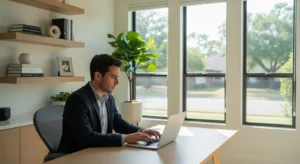
Take a slow breath and look around your space. Notice the surfaces. The desktop, the kitchen counter, the coffee table. What do you see? If you’re like most people, you see a collection of items that don’t quite have a home: a stack of mail, a stray charging cable, a book you plan to read, a pair of scissors that never made it back to the drawer. Each item is small, but together they create a low hum of visual noise. This isn’t a sign of failure; it’s a sign of friction. Every misplaced object is a tiny, postponed decision that drains your mental energy throughout the day.
At The Focused Method, we believe that a calm, organized environment isn’t achieved through sheer willpower or a weekend-long cleaning frenzy. It comes from building simple, sustainable systems. This is the heart of smart storage. It’s not about buying more containers or implementing a rigid, color-coded nightmare. It’s about designing your environment so that tidiness becomes the path of least resistance. It’s about creating clever home storage ideas that work with your natural habits, not against them.
This guide will walk you through the core principles of creating these low-maintenance systems. We’ll move beyond simply finding a place for your things and into the realm of creating a home that supports a focused, peaceful life. We’ll explore how to reduce decision fatigue, build effortless daily habits, and implement practical storage solutions that bring a sense of order to every room, no matter its size. Forget the guilt and the overwhelming “to-do” lists. Let’s build a foundation for lasting calm.
📚 Table of Contents
- The Foundation of Smart Storage: Understanding Your Environment
- Creating Flow: The Principles of Effortless Organization
- The Power of the Reset: Simple Habits for Lasting Calm
- Smart Storage Solutions for Every Space (and Budget)
- Putting It Into Practice: Two Mini-Makeovers
- Frequently Asked Questions About Smart Storage
- How do I tackle a huge backlog of paper?
- How can I get my family or roommates on board?
- What’s the best way to handle sentimental items?
- My space is just too small for any real storage solutions. What can I do?
- Your First Steps to a Calmer Home
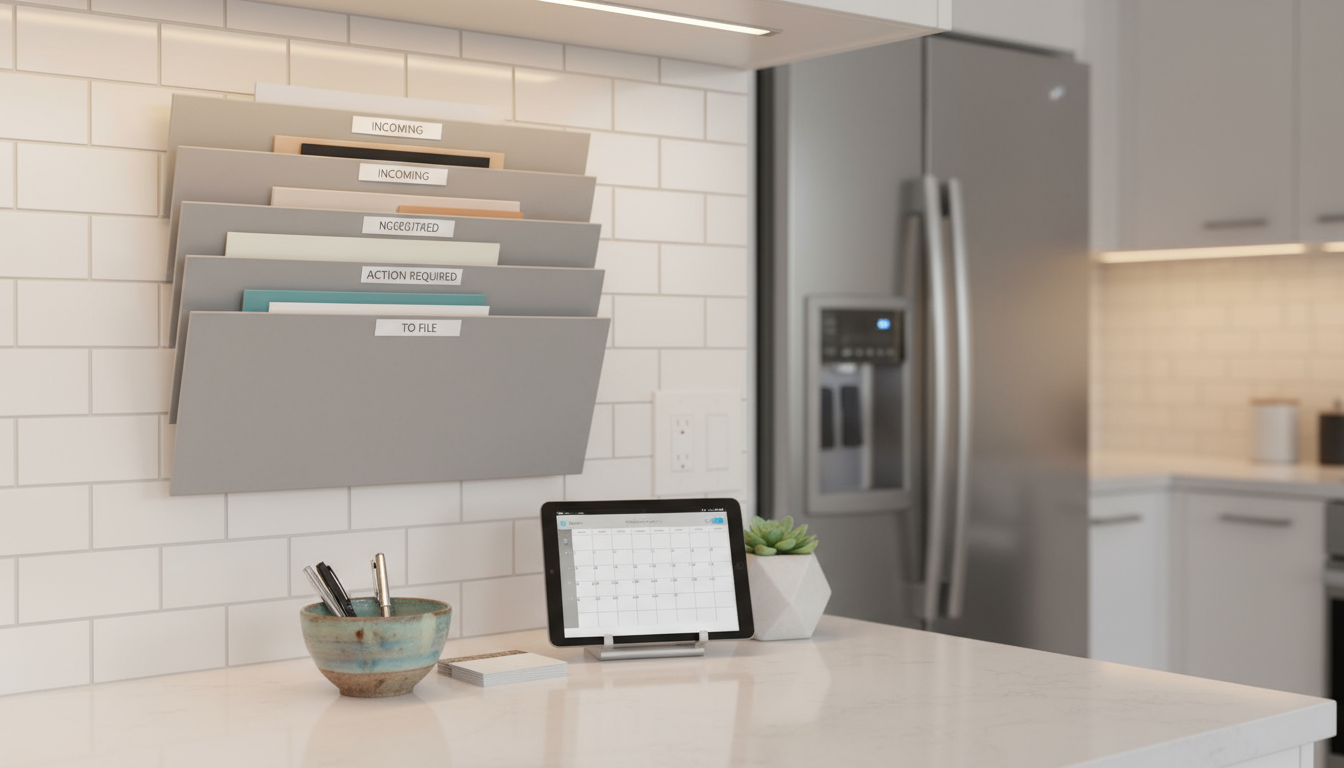
The Foundation of Smart Storage: Understanding Your Environment
Before you buy a single bin or label maker, the most critical step is to understand the psychology of your space. The most effective home organization systems are not imposed upon a space; they are designed in response to it. The goal is to shift your mindset from relying on discipline to relying on design. Your environment should do the heavy lifting for you. This begins with understanding a few key concepts that transform how you see your home.
The first concept is visual friction. This is the mental and emotional tax that clutter imposes on us. Every item that is out of place competes for your attention, even on a subconscious level. That pile of papers on your desk quietly reminds you of unfinished tasks. The jumble of shoes by the door creates a small hurdle every time you enter or leave. Reducing visual friction is the primary goal of smart storage. A clear surface isn’t just aesthetically pleasing; it’s mentally liberating. It sends a signal to your brain that things are under control, freeing up cognitive resources for more important thoughts.
To combat this friction, we introduce the idea of working zones. A working zone is a designated area for a specific type of activity. Instead of letting tasks spill all over the house, you create intentional homes for them. Your kitchen might have a coffee zone, a food prep zone, and a dish-washing zone. Your entryway might have a zone for mail processing. By grouping all the tools and items needed for a task in one logical place, you eliminate the time and energy spent searching for things. You no longer have to hunt for the coffee filters because they live right next to the coffee maker and the mugs. This simple act of co-locating related items is one of the most powerful storage solutions you can implement.
Finally, every working zone needs a reset point. This is the default, clean state of that zone. For a kitchen counter, the reset point is a clear, wiped-down surface. For a desk, it’s a clear top with only the essential tools remaining. The reset point is your finish line. It’s the visual cue that a task is complete and the space is ready for its next use. By defining these reset points, you make tidying up a simple, non-negotiable part of a task’s lifecycle, rather than a separate, dreaded chore.
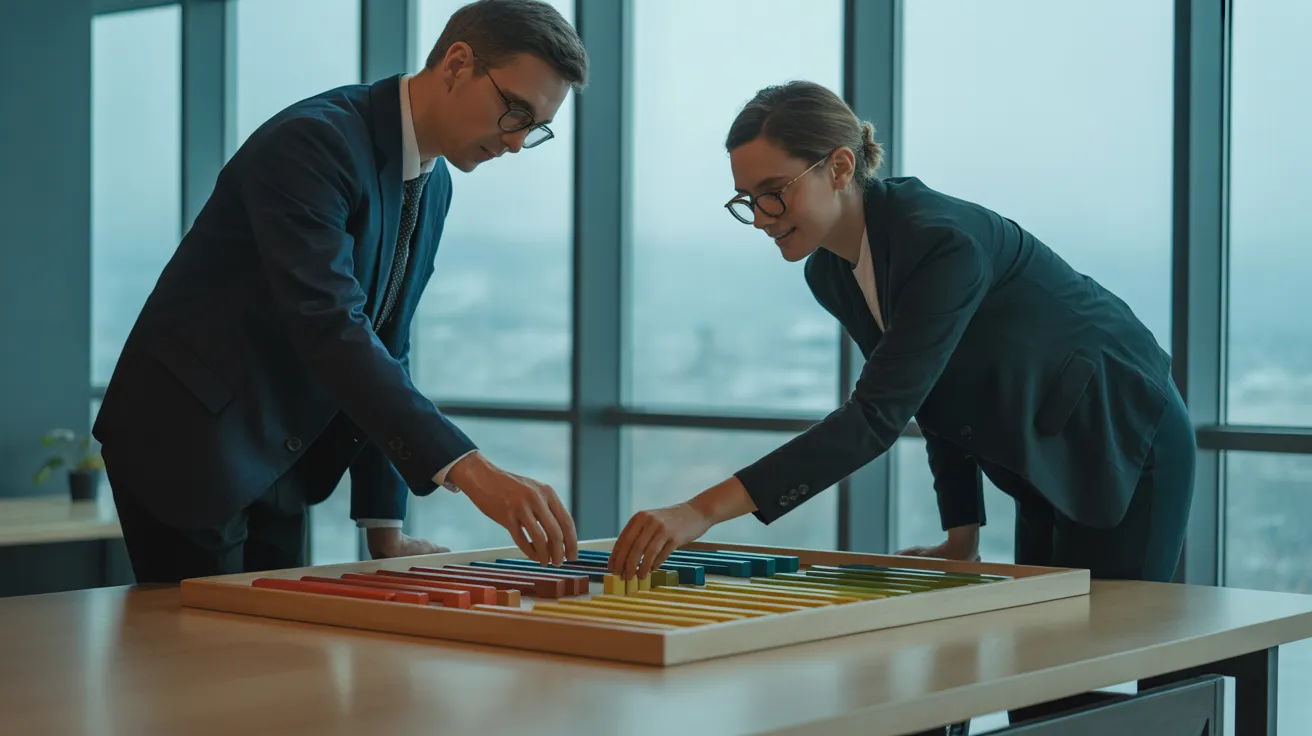
Creating Flow: The Principles of Effortless Organization
With a solid understanding of environmental design, we can now build the systems that create effortless flow. The goal here is to make the right choice—putting something away—the easiest choice. True smart storage solutions for the home are intuitive and require minimal thought to maintain. They are built on a few core principles that you can apply to any object in any room.
The most fundamental principle is this: every single item you own needs a home. This sounds obvious, but it’s the step most people skip. An item’s “home” should be logical and convenient. It should be stored as close as possible to where it is most frequently used. Why do scissors end up on the kitchen counter? Because their designated home is in a desk drawer upstairs, far from where you actually open packages. The solution isn’t to be more disciplined about walking upstairs; it’s to give a pair of scissors a home in a kitchen utility drawer. When an item’s home is inconvenient, it will inevitably become clutter. Walk through your space and ask yourself, “Where do I use this?” That is where its home should be.
Once an item has a home, the next step is to get it there with minimal effort. This is where we introduce the one-touch rule, a game-changing habit for preventing clutter before it starts. The rule is simple: whenever you touch an item, you complete its journey. You don’t put mail on the counter to deal with later; you immediately open it over the recycling bin and put the important pieces in their designated “action” folder. You don’t drop your coat on a chair; you hang it in the closet as you walk in the door. It might feel like more effort in the moment, but it saves you from the future, larger task of processing a huge pile of accumulated items. Each “touch” should move the item closer to its final destination, and ideally, all the way there.
Many people believe hyper-detailed labeling is the key to organization. We advocate for a label-light approach. A system that requires a label for every tiny thing is often too complex to maintain. Instead, your home organization should be visually intuitive. Use clear containers so you can see the contents at a glance. Group like with like inside drawers using simple dividers. The categories should be broad and obvious: “Snacks,” “Cables,” “First Aid.” If you have to spend more than a few seconds deciphering your own system, it’s too complicated. The best storage solutions are self-explanatory, for you and for anyone else in your household.

The Power of the Reset: Simple Habits for Lasting Calm
A perfectly organized space will not stay that way on its own. Life is messy. The true secret to maintaining a calm environment is not a one-time decluttering marathon but the consistent practice of small, manageable habits. Smart storage provides the infrastructure, but daily and weekly resets are what keep the system running smoothly. These are not arduous chores; they are brief, focused moments of restoration that prevent small messes from cascading into overwhelming chaos.
The most powerful habit you can build is the 10-minute tidy. Set a timer for just ten minutes at a consistent time each day, perhaps before bed or after dinner. During this time, your only goal is to return things to their designated homes. Don’t get sidetracked by deep cleaning or starting a new organization project. Just walk through your main living areas—the kitchen, the living room, the entryway—and put things back where they belong. Put the remote in its basket, hang up the jackets, place the shoes on their rack, and load the stray dishes into the dishwasher. It is astonishing what can be accomplished in just ten minutes. This small investment of time resets your primary living spaces, reduces visual friction, and allows you to start each day with a clean slate.
For the areas that accumulate paper and digital clutter, a weekly reset is essential. Dedicate 20-30 minutes once a week, perhaps on a Sunday evening, to a focused clear-out. This is your time to tackle your physical and digital inboxes. Go through the mail and papers that have accumulated in your “action” folder. Pay the bills, make the phone calls, and file the important documents. Then, turn to your computer. Your desktop should be treated like a temporary workspace, not a permanent storage facility. Drag all the files from your desktop into a single “To Sort” folder. Then, quickly move them into your main file structure. This habit prevents the digital overwhelm that can be just as stressful as physical clutter.
Speaking of digital files, applying smart storage principles to your computer is non-negotiable in the modern world. Create a brutally simple folder structure. You don’t need dozens of sub-folders. Start with a few high-level categories like “Work,” “Personal,” “Finances,” and “Archive.” Inside “Personal,” you might have “Photos,” “Health,” and “Household Docs.” The key is to keep it streamlined enough that you know exactly where something should go without having to click through a labyrinth of folders. A clean digital environment mirrors a clean physical one, reducing friction and making it easier to find what you need when you need it.

Smart Storage Solutions for Every Space (and Budget)
The principles of smart storage are universal, but their application needs to be tailored to your specific circumstances. Whether you’re living in a tiny apartment, sharing a home with others, or working with a tight budget, there are clever home storage ideas that can bring order and calm to your environment. The trick is to focus on maximizing the potential of the space you have.
For those navigating small apartment strategies, the mantra is “go vertical.” Your floor space is limited, but your wall space is a valuable, often underutilized, asset. Install simple floating shelves above a desk or in a bathroom to get items off of surfaces. Use over-the-door organizers for shoes, cleaning supplies, or pantry items. Look for tall, narrow shelving units that maximize storage without a large footprint. Under-bed storage containers are perfect for seasonal clothing, extra linens, or sentimental items you don’t need to access daily. Finally, embrace multi-functional furniture. An ottoman that doubles as storage for blankets, a coffee table with drawers, or a bed frame with built-in storage can be a game-changer in a compact living area.
When you’re navigating shared spaces with family or roommates, communication and clear boundaries are paramount. The biggest source of conflict is often a lack of agreed-upon systems. Start by tackling a shared pain point. Is the entryway always a mess? Work together to create a “landing strip” where each person has a designated hook for their coat, a small tray for keys and wallet, and a spot for one pair of shoes. For shared items like remote controls or gaming controllers, a single decorative bowl or basket serves as an undisputed home. The key is to make the system so simple and logical that it’s easier for everyone to use it than to ignore it. A little bit of intentional design can prevent a lot of passive-aggressive tension.
Effective home organization does not require a hefty investment. There are countless low-cost and high-impact solutions available. You don’t need a custom closet system from a high-end retailer like The Container Store to create order. Start by repurposing what you already have. Shoeboxes can become excellent drawer dividers. Glass jars can stylishly store pantry staples. For new items, look to affordable and modular systems from retailers like IKEA, whose products are often designed with small-space efficiency in mind. Simple tension rods can be used inside cabinets to create vertical storage for cutting boards and baking sheets. The most important investment is not in expensive products, but in the time it takes to think through a system that truly works for you.

Putting It Into Practice: Two Mini-Makeovers
Theory is helpful, but seeing these principles in action makes them real. Let’s walk through two common problem areas—the home office desk and the kitchen counter “dumping ground”—and apply smart storage solutions to transform them from sources of stress into models of efficiency.

Mini-Makeover 1: The Home Office Desk
The Before: Imagine a desk buried under piles. Last week’s reports are mixed with new mail and a few stray sticky notes. Pens and highlighters are scattered across the surface, and a tangled mess of charging cables snakes out from behind the monitor. This high level of visual friction makes it difficult to focus. Every time you sit down, you’re first confronted with the chaos, and finding a clear space to work requires mental and physical effort.
The Process and The After: First, we clear everything off, establishing the reset point: a completely empty surface. Then, we define working zones. The area directly in front of the monitor is the “deep work” zone and must remain clear. To the left, we place a single, simple vertical file holder or an inbox tray. This is the designated home for all incoming papers. To the right, we place a pen cup and a small notebook for quick thoughts. Cables are wrangled with simple velcro ties and run along the back of the desk. In a drawer, we use a simple organizer to create homes for paper clips, staples, and other supplies. The one-touch rule is now applied to every piece of paper: it either goes in the inbox for processing during the weekly reset, or it’s dealt with and filed immediately. The result is a calm, inviting workspace. The system is incredibly simple, but it creates a powerful psychological shift. The desk is no longer a storage surface; it’s a tool for focus.
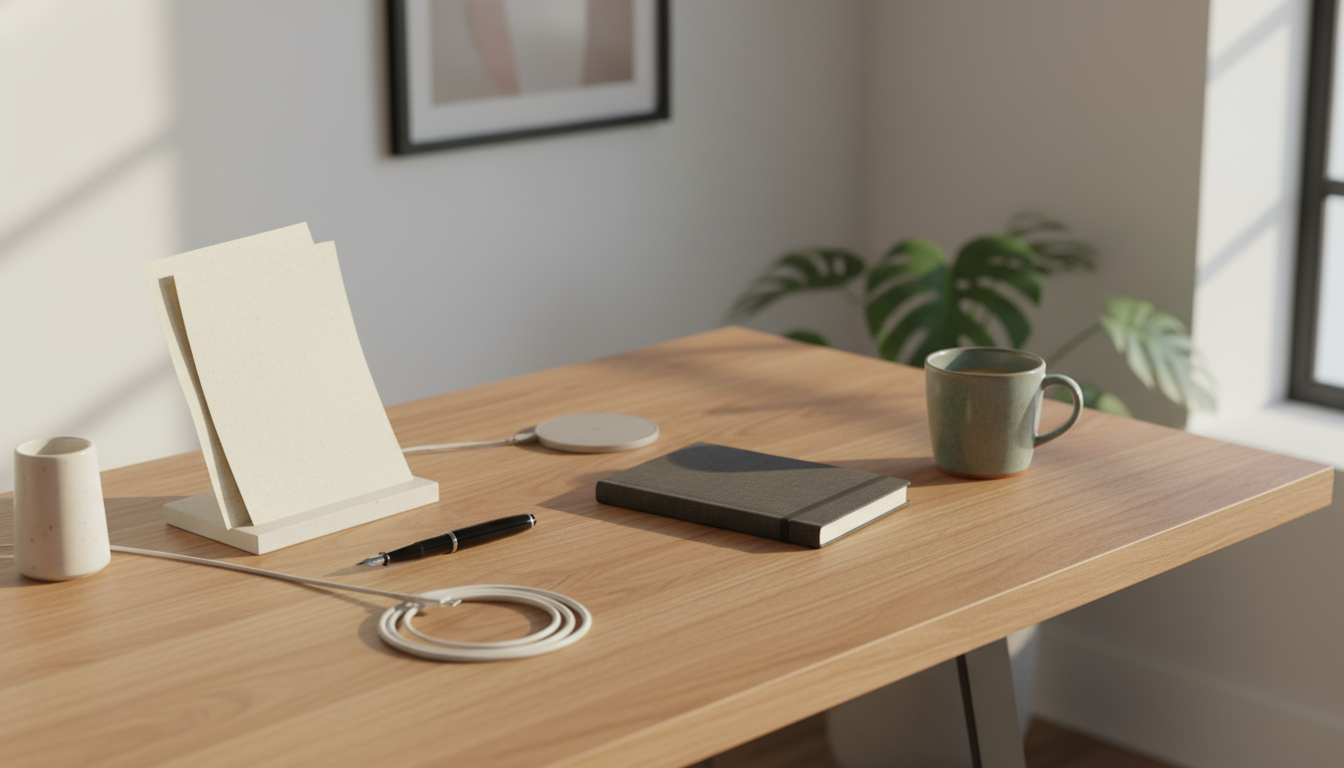
Mini-Makeover 2: The Kitchen Command Center
The Before: Picture that one corner of the kitchen counter. It’s the default home for everything that doesn’t have a home. It’s a jumble of keys, sunglasses, outgoing mail, receipts, kids’ school permission slips, and a few dead batteries. It’s the epicenter of household clutter, a constant source of frustration, and the place where important things get lost.
The Process and The After: Instead of fighting this natural tendency for a landing strip, we formalize it. We transform this “junk pile” into a functional “command center.” We mount a small, multi-slotted wall file organizer directly above the counter. The slots are given broad, intuitive purposes: “Incoming,” “Action Required,” and “To File.” Below it, we place a small, attractive bowl. This becomes the official, undisputed home for keys and wallets. This is the reset point. A small hook is installed for lanyards or a key ring. The counter space itself is now kept clear. When the family comes home, the habit is simple: keys in the bowl, mail in the “Incoming” slot. The visual friction is gone, replaced by an orderly, intentional system. It took a chaotic habit and gave it a structure, proving that the best storage solutions work with human nature, not against it.

Frequently Asked Questions About Smart Storage
Embarking on an organizational journey often brings up common questions and hurdles. Here are answers to some of the most frequently asked questions we hear, designed to help you navigate the process with confidence.
How do I tackle a huge backlog of paper?
The key is to avoid overwhelm. Do not try to sort through years of paper in one weekend. Instead, use a technique called “time blocking.” Set a timer for just 15 minutes each day. During that time, and only that time, work on the backlog. Create three simple physical piles or boxes: Shred/Recycle, File, and Action. Touch each piece of paper once and decide which pile it belongs in. When the timer goes off, stop. The goal is consistent, manageable progress, not immediate perfection. Over a few weeks, you’ll make a massive dent without burning out.
How can I get my family or roommates on board?
Nagging and criticism are ineffective. The best approach is to lead by example and make the new system incredibly easy to use. Start with a shared problem area that affects everyone. Frame it collaboratively: “I’ve been so frustrated trying to find scissors lately. What if we kept a pair in this kitchen drawer?” When you create a logical, convenient home for a shared item, others will naturally start using it because it’s the easiest option. Focus on creating these “wins” in communal spaces first. Once they experience the benefits of a system, they’ll be more open to adopting others.
What’s the best way to handle sentimental items?
Sentimental items are important, but they can also be a major source of clutter if left unchecked. The goal is to honor them, not to let them take over your living space. Designate a specific, contained home for them—a beautiful “memory box,” a specific shelf on a bookcase, or a dedicated storage bin. This act of giving them a special place elevates their importance. As you review these items, remember that you don’t need to keep every single object to preserve a memory. Take a photo of a bulky item before letting it go, or keep just one representative piece from a larger collection.
My space is just too small for any real storage solutions. What can I do?
This is a common belief, but it’s often a matter of perspective. Small-space living isn’t about having less storage; it’s about being more creative with the storage you have. Maximize vertical space with tall, narrow shelves. Use the back of every door for hanging organizers. Choose furniture that does double duty, like a bed with drawers underneath. Most importantly, a small space forces you to be a ruthless editor. You must be highly intentional about what you allow into your home. Practice a “one in, one out” rule to maintain equilibrium. In a small space, every single item must earn its keep and have a clearly defined home.
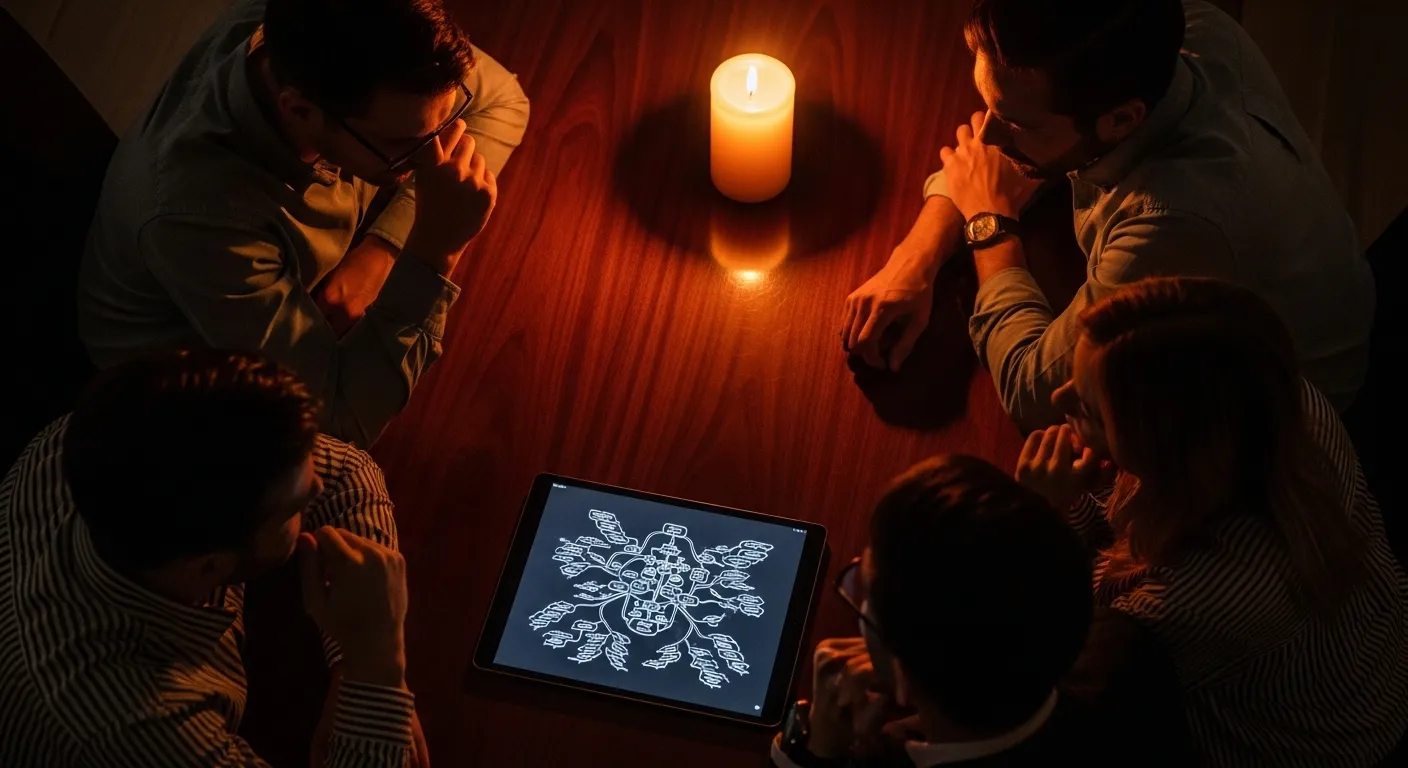
Your First Steps to a Calmer Home
The journey to an organized, low-friction life doesn’t start with a massive overhaul. It starts with a single, intentional action, repeated until it becomes an effortless habit. The goal of smart storage is not to achieve a state of static perfection, but to create a resilient system that makes it easy to restore order. It’s about building an environment that supports you, freeing up your time and mental energy for what truly matters.
Instead of feeling overwhelmed by the possibilities, commit to starting small. This week, choose one to three of these simple resets to integrate into your routine:
1. Establish Your First Reset Point. Choose one high-traffic surface that collects clutter—the kitchen island, the dining table, or your coffee table. Your mission for the next seven days is to clear this surface completely before you go to bed each night. This one act will create a powerful pocket of calm in your home.
2. Practice the One-Touch Rule on Your Mail. For the next three days, commit to handling every piece of mail the moment it enters your home. Stand over the recycling bin, immediately toss the junk, and place the important items in a designated folder or tray. Notice how this prevents a pile from ever forming.
3. Perform a 10-Minute Tidy. Tonight, before you relax for the evening, set a timer for ten minutes. Put on some music and move through your main living area, simply putting things back in their homes. You will be amazed at the transformation that can happen in such a short amount of time.
These small steps are the building blocks of a sustainable system. They are not about adding more to your to-do list; they are about designing a simpler, more focused way of living. By shifting your focus from willpower to environment, you can create a home that is not only organized, but a true sanctuary of calm.
Disclaimer: The information provided in this article is for informational purposes only and does not constitute professional, financial, or legal advice. Please consult with a qualified professional for advice tailored to your specific situation.
For expert guidance on productivity and focus, visit OSHA Ergonomics, National Institutes of Health (NIH), National Sleep Foundation, American Institute of Stress and Mindful.org.

